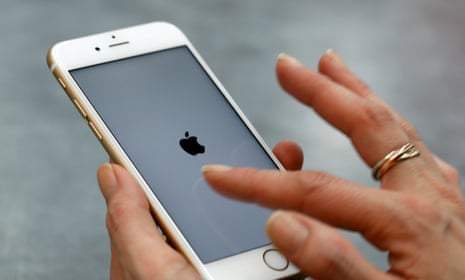A Seattle-based law firm has filed the first legal action against Apple after the Guardian revealed how the technology giant has been deliberately “killing” its customers’ iPhone 6s if they have had them repaired by a third party.
Law firm PCVA said on Friday that it had brought a class-action lawsuit in the US district court for the northern district of California in response to Apple’s “error 53” iPhone controversy.
Apple has faced a consumer backlash since the Guardian revealed how thousands of iPhone 6 users had been left with permanently disabled handsets after installing the latest iOS software. A UK barrister has said the policy may also be a criminal offence here.
The Australian competition and consumer commission asked Apple for an explanation and said it was examining any breach of its consumer laws.
Darrell Cochran, PCVA’s lead attorney for the class action lawsuit in California, said: “The first objective is to get all the affected iPhone customers re-outfitted with working phones, and without the overwhelming costs that thousands of people are facing right now with error 53 codes and bricked phones.”
He dismissed Apple’s security argument as spurious. “If security was the primary concern, then why did the phones work just fine without the software update?”
Apple’s iOS 9 software update, launched last autumn, will brick the handset if it detects that the touch ID fingerprint recognition and/or the home button is not the original. Some victims had had their phones repaired by third-party contractors. Others had simply damaged them and in most cases they worked normally until the software update.
Victims who have complained to their local Apple store have been left incredulous after being told by Apple staff that there was nothing that could be done to fix their phone and that they would have to buy a new one.
Despite facing a raft of negative stories around the world, the world’s most valuable company has so far refused to defend the error 53 policy, except to claim the measure was a security feature.
Cochran said central to the claim was the fact that no warnings were given to iPhone users that they could lose their phone – and all the data contained within it.
“No materials we’ve seen from Apple ever show a disclosure that your phone would self-destruct if you download new software onto a phone,” Cochran said. “If Apple wants to kill your phone under any set of circumstances and for any reason, it has to make it crystal clear to its customers before the damage is done.”
Apple has been locked in a battle to stop third-party companies making money out of its products. However, tech experts have suggested the policy was introduced to increase revenues, as it forces anyone needing an out-of-warranty repair to their home button to pay the £236 Apple charges in the UK.
London-based barrister, Richard Colbey of Lamb Chambers, said he thought Apple’s bricking policy could well be seen as an offence under the Criminal Damage Act 1971, which makes it an offence to intentionally destroy the property of another.
Apple declined to comment on news of the legal action.
